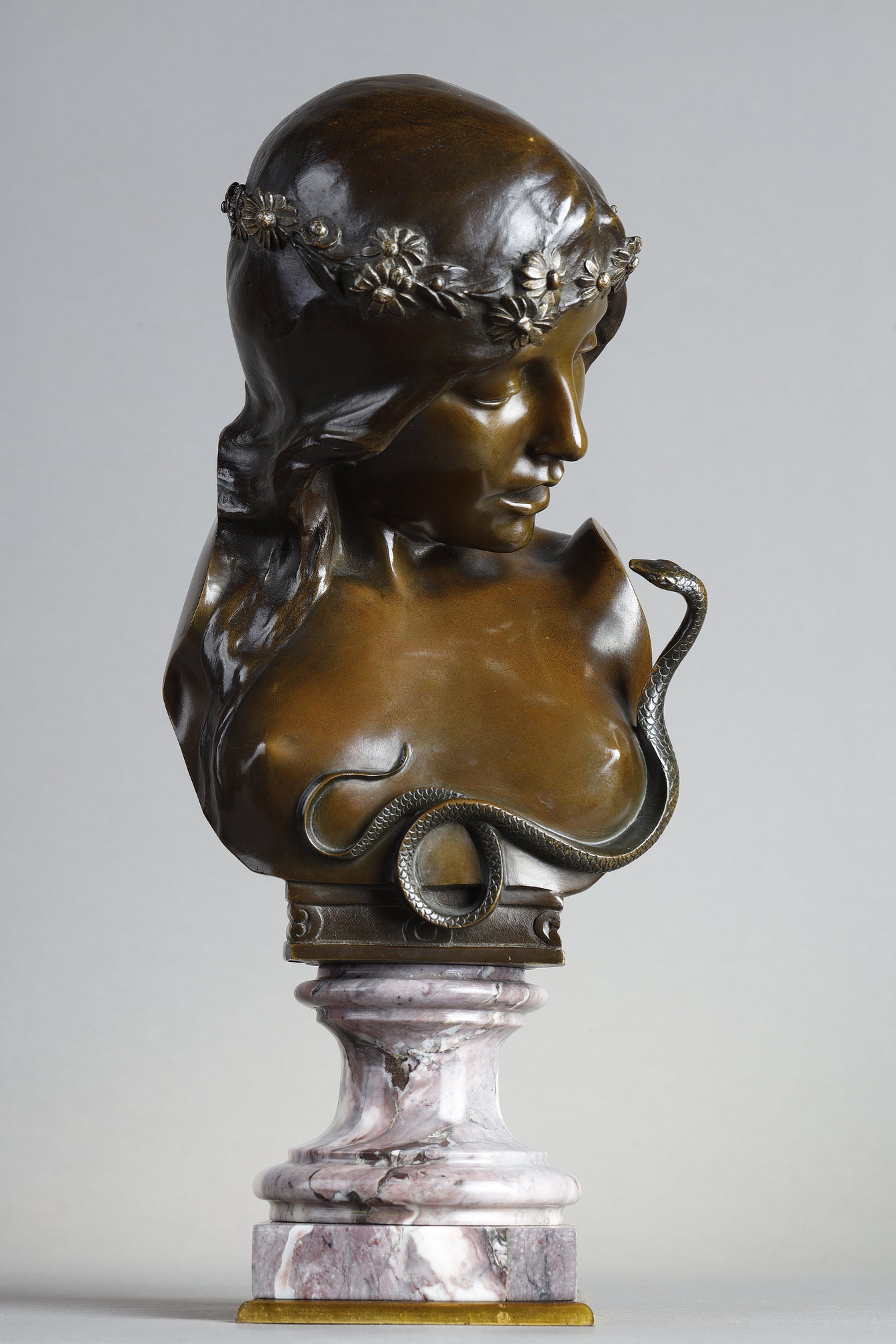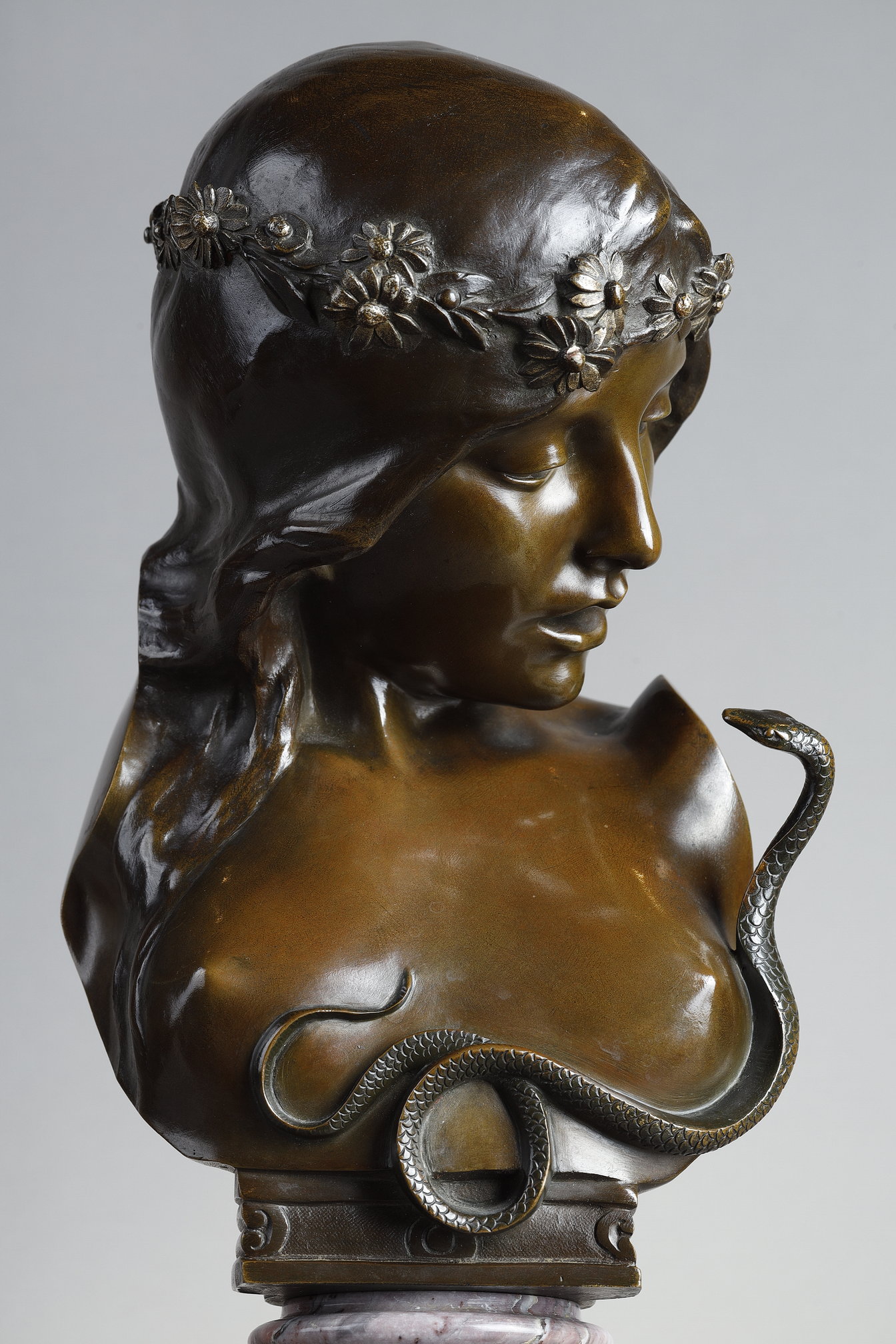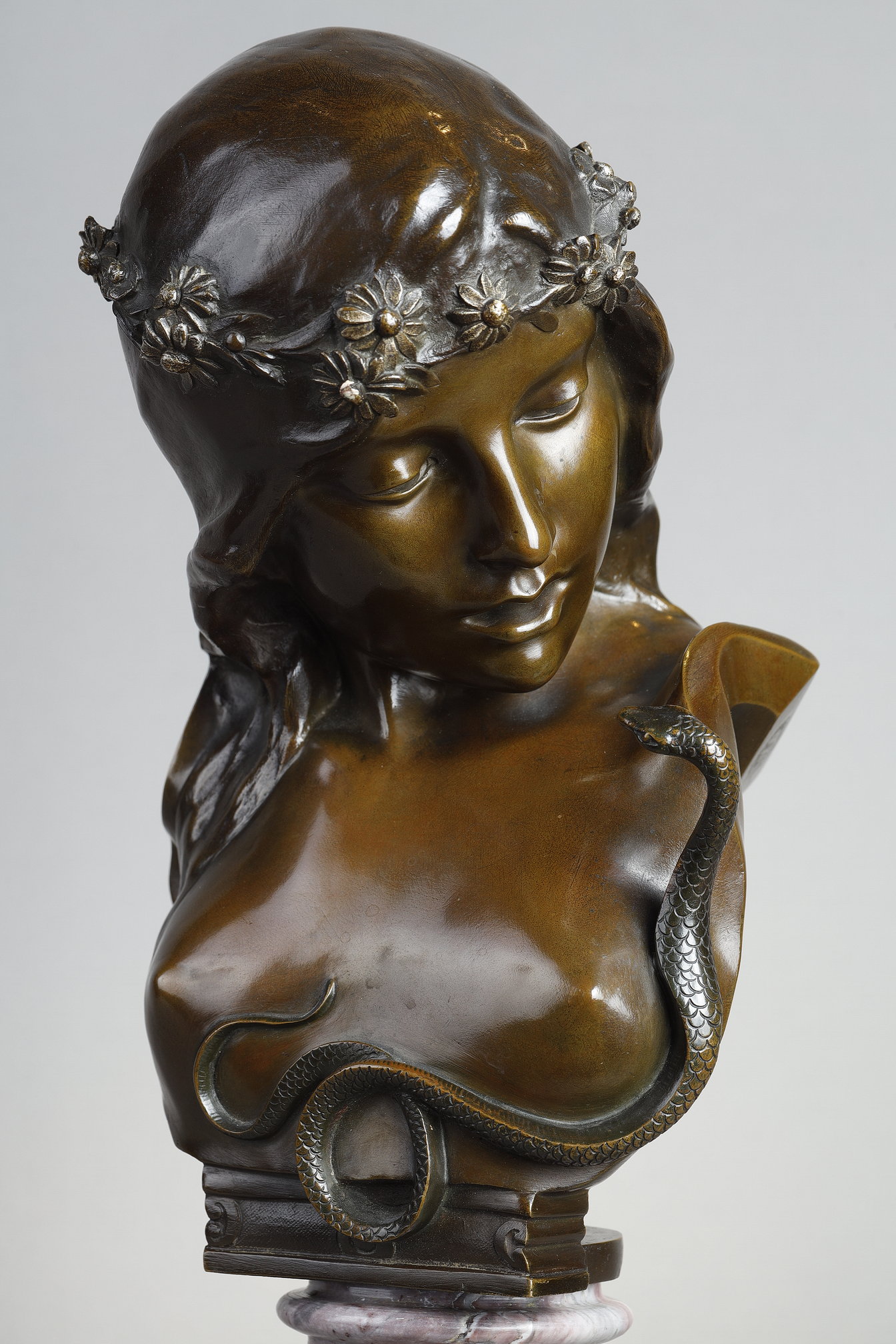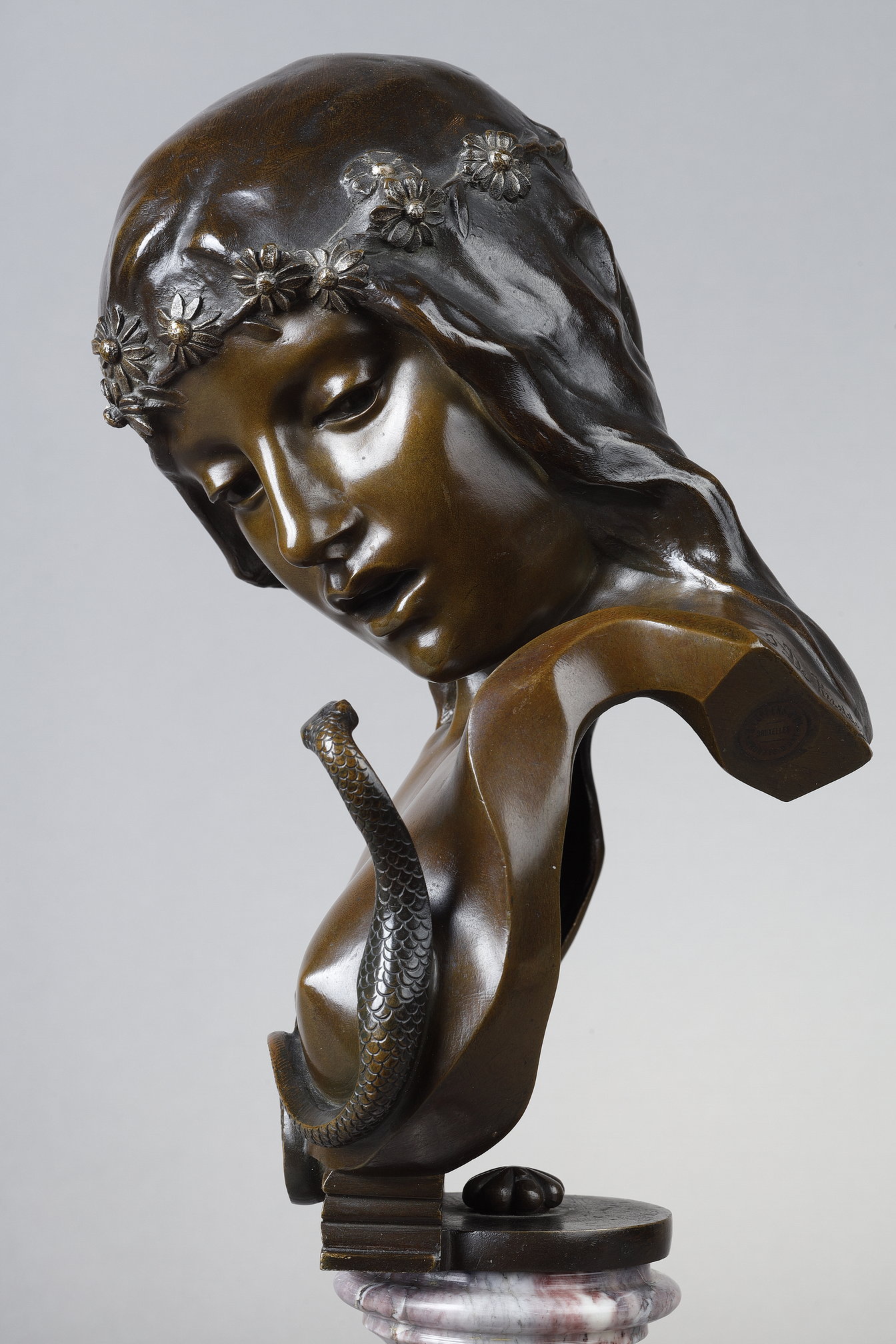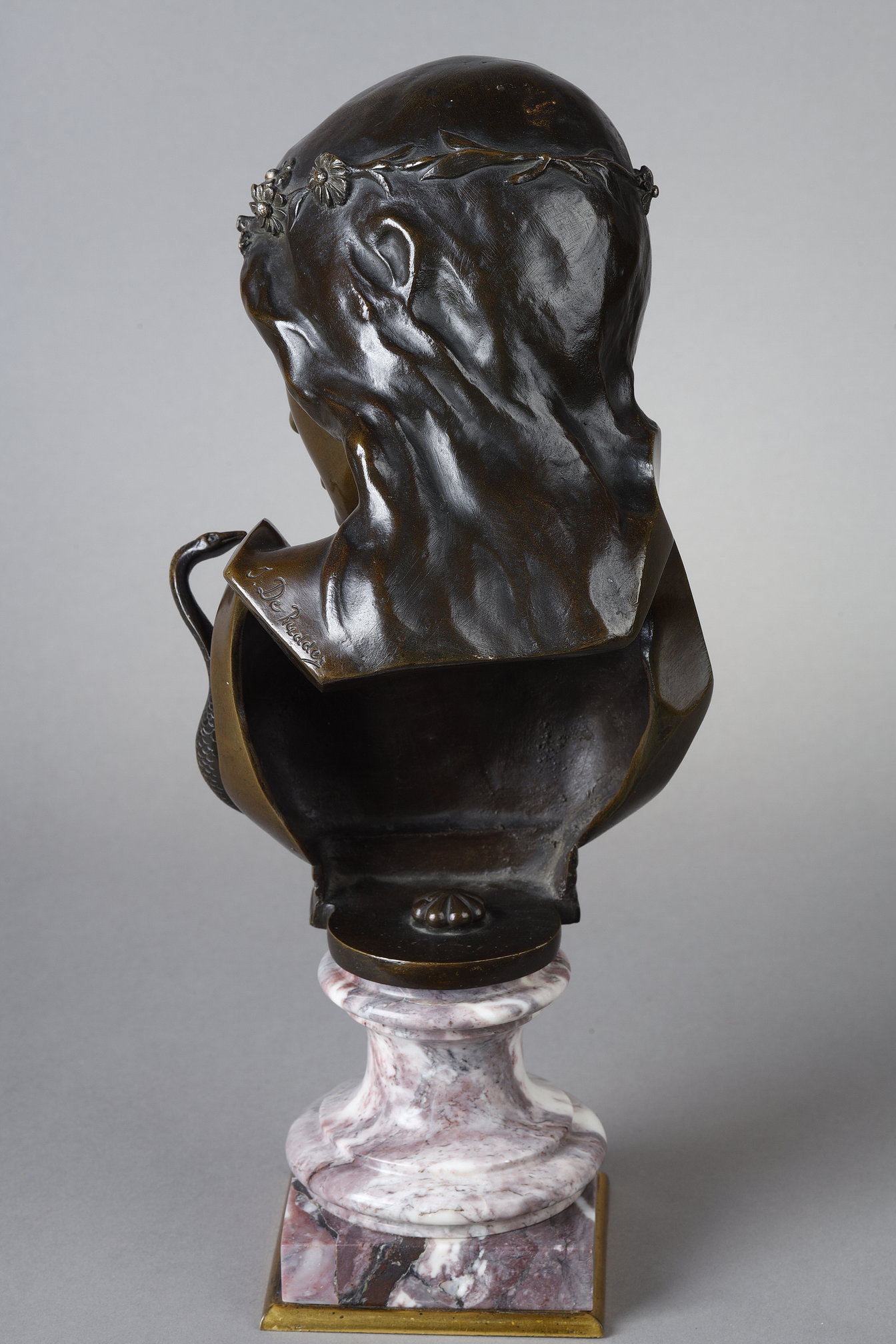CLEOPATRA
ISIDORE DE RUDDER (1855-1943)
Belgian
Dimensions : 37 x 17 x 15,5 cm / D10 cm (base)
Material : Bronze on marble base
Signature : “I. De Rudder”
Foundry stamp : H. Luppens & Cie Bronze d’Art Bruxelles
Historical and artistic context
This finely crafted bronze sculpture by Belgian artist Isidore De Rudder (1855–1943) portrays Cleopatra, the last active ruler of the Ptolemaic Kingdom of Egypt, at the poignant moment of her legendary suicide. Captivated by antiquity and the emotional depth of historical figures, De Rudder offers a romantic, symbolic interpretation of the queen’s final hours.
The bust is elegantly modeled, capturing Cleopatra’s serene beauty and introspective gaze, framed by a delicate wreath of flowers. An asp—a coiled serpent symbolic of her fate—creeps across her chest. The piece blends Art Nouveau fluidity and decorative motifs with a classical foundation, fusing grace and gravitas.
The sculpture alludes to the tragic events of 31 BC: the Battle of Actium, where Cleopatra and Mark Antony were defeated by Octavian. Believing Cleopatra dead, Antony ended his own life. Cleopatra chose to die by snakebite rather than face humiliation in Rome.
De Rudder distills this complex historical tapestry into a quiet, intimate moment. The bronze patina adds visual depth and emotional resonance, enhancing the work’s sensual and dramatic presence. The artist’s restraint avoids overt theatricality, instead suggesting Cleopatra’s dignity, inner strength, and resolute acceptance of fate.
This bust stands as a testament to Isidore De Rudder’s technical finesse and narrative skill, reflecting the enduring allure of powerful female figures in both art and mythology.
Literature
- BENEZIT, E.Dictionnaire des peintres, sculpteurs, dessinateurs et graveurs. Paris: Librairie Gründ, 1961. Vol.2. p. 1104-1110.

